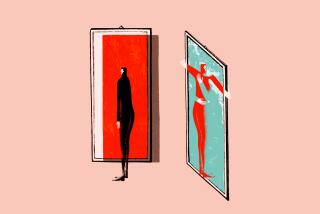New Orleans: Love, in good times and bad
Looking at a place you love isn’t much different from looking at a person who has stolen your heart.
There are flaws and distressing times, of course. But you learn to live with the annoyances, because there’s something about that person — or place — that makes you think: “Beautiful!”
Hello, New Orleans.
I was born and have spent most of my life here. New Orleans is exuberant and sassy and smelly — in good and bad ways. Its people are an all-American mix. Rich, poor, middle class, black, white, Latino and some Asians live in proximity, packed between the Mississippi River and Lake Pontchartrain.
My Uptown condo is three doors from Fred’s mama’s house — we say things like “I’m going by my mama’s house” in NOLA. Fred Wellens is a Mardi Gras Indian, one of scores of black men (and a few women) who, on Mardi Gras and St. Joseph’s Day, wear elaborate homemade outfits with dyed feathers and beads and march in “tribes.” “I’m so pretty,” says Fred and the other “Indians” as they preen and we take photos.
Although New Orleans still presents debutantes, it also embraces drag queens and eccentrics such as the late Ruthie the Duck Girl, a tiny weathered woman who was followed by a waddling duck in her forays to French Quarter bars.
Obvious city attractions are the French Quarter (really dating from the Spanish period, but never mind), Mardi Gras, JazzFest, the Mississippi River, the music and food: po-boy sandwiches, shrimp, oysters, fish, gumbo, crawfish étouffée and beignets.
Sure, it’s almost insufferably hot in summer; however, fall to spring is practically idyllic. Hurricane season makes us edgy.
After 39 years of no direct hits, weak levees collapsed during Hurricane Katrina, on Aug. 29, 2005, although most of its force slammed east of New Orleans. Eighty percent of the city flooded. Water lingered for two weeks.
More than 1,400 Louisianians of all ethnicities and income levels died. Countless homes were destroyed. After the initial well-televised looting, there was little crime for months, and strangers meeting in supermarkets or drugstores would ask: “How’d you do?”
We all realized our city was changed. But we went ahead and celebrated Mardi Gras the next February. The Saints won the Super Bowl four years later and fireworks shot up, cellphone networks crashed. A city with spirit refused to whimper.
We were all in this together.
And when you get down to it, that’s a beautiful thing.
— Millie Ball
Ball was travel editor of the New Orleans Times-Picayune from 1990 to 2009.
More to Read
Sign up for The Wild
We’ll help you find the best places to hike, bike and run, as well as the perfect silent spots for meditation and yoga.
You may occasionally receive promotional content from the Los Angeles Times.






